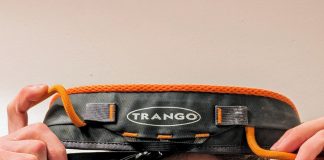Casio America, Inc., announced the release of the latest addition to its RANGEMAN series of watches, which supports the wearer even in survival situations. The new GPR-B1000 features the world’s first solar-assisted GPS navigation and will be available in two models.
The RANGEMAN is part of the “Master of G” series of watches designed for use in the most extreme conditions. RANGEMAN watches incorporate Triple Sensor to measure compass bearing, atmospheric pressure/altitude, and temperature, based on the concept of “Survival Toughness.”
In addition to Triple Sensor, the new GPR-B1000 is capable of GPS navigation—a first for a G-SHOCK watch. The watch collects location data from GPS satellites to display the current location on a route or bearing to a destination, in real-time. The watch also saves track and point data (including longitude/latitude, altitude, and temperature) in memory.
Using Bluetooth, the watch pairs with a smartphone to connect with the G-SHOCK Connected app, allowing the user to create routes or manage log data in the app. Tracks and point data saved in memory are displayed on a 3D map or as a timeline. The watch also receives data from time servers to keep accurate time anywhere in the world.
The GPR-B1000 features both wireless and solar charging systems. The GPS functions are usable for up to 33 hours on a wireless charge of approximately five hours. Even if the battery level drops below a usable level for GPS while outdoors, solar charging can be used to resume GPS functions for a limited time. The time display is kept powered at all times using solar charging, regardless of the status of GPS functions.
The GPR-B1000 delivers toughness in construction and materials, with a dust- and mud-resistant structure and carbon fiber insert band. Designed for the ultimate in survival toughness, the GPR-B1000 is the latest evolution of G-SHOCK.
GPS navigation is usable for approximately 33 hours on a wireless charge of about five hours. If the battery becomes depleted, GPS functions can be resumed by charging the watch in bright light. (GPS functions are usable for one hour on a solar charge of approximately four hours in 50,000 lux conditions.) Regardless of the status of GPS functions, solar charging keeps the time display powered at all times.








